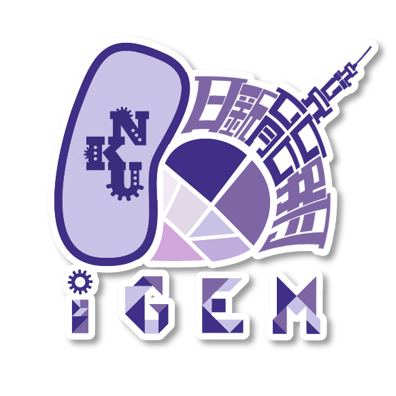Proof of Concept
1. Demonstration of AI-2 Controllers in real world
1.1 Manipulation of 'responcer cell' in co-cultures
In Proof of Concept page, experiment results showed that two AI-2 Response Devices could respond to different AI-2 concentration by emitting different intensity of GFP fluorescence. We managed to 'shut off or 'turn on' the expression of GFP in AI-2 Response Device A.
Results showed that a 1:1 mixture of AI-2 Response Device with AI-2 Suppliers could significantly enhance AI-2-inducible GFP fluorescence compared to the control group (Fig. 1). Fluorescence microscopy images of the cells at 8 h in co-culture also illustrated that in the group which AI-2 Response Device A was co-cultured with pLuxS, the GFP fluorescence intensity is significantly higher than control group (Fig. 2).

Fig. 1: Cell-cell modulation of GFP expression

Fig. 2: Fluorescence microscopy images of Device A cells co-cultured with pLuxS at 8 h
Also, 1:1 mixture of AI-2 Response Device with AI-2 Consumers could significantly depress AI-2-inducible GFP fluorescence compared to the control group (Fig. 3), as expected. Fluorescence microscopy images of the cells at 8 h in co-culture also illustrated that in the group which AI-2 Response Device A was co-cultured with pLsrACDB or pLsrACDBFG, the GFP fluorescence intensity is lower than control group (Fig. 4).

Fig. 3: Cell-cell modulation of GFP expression

Fig.4: Fluorescence microscopy images of Device A cells co-cultured with pLsrACDB or pLsrACDBFG at 8 h
1.2 Manipulation of biofilm formation
While this methodology provides a tool to regulate synthetic systems, it may also serve as a modifier of natural processes such as antibiotic susceptibility, motility, and biofilm formation. It has been shown that AI-2 has a contributing effect on biofilm formation in E. coli. Therefore, we investigated if AI-2 Consumers and AI-2 Suppliers could interfere with biofilm formation process from this biofilm producer. Co-incubations of pTrcHisB were re-inoculated with pTrcHisB, AI-2 Suppliers or AI-2 Consumers and cells were grown in a 96-well plate for 24 h.
Biofilm production was normalized to the final cell density and bacteria co-cultured with AI-2 Suppliers pLuxS and pLuxSMtn showed increased biofilm formation by about 15% compared to identical incubations with pTrcHisB. In the meantime, bacteria co-cultured with AI-2 Consumers showed decreased biofilm formation by about 40% compared to identical incubations with pTrcHisB. A two-tailed unpaired Student's t-test was performed between the groups and the result indicates that the biofilm increase and reduction are both significant.

Fig.5: Effect of AI-2 Suppliers on biofilm production

Fig.5: Effect of AI-2 Consumers on biofilm production
2. Project Conclusion
Coordination between cell populations via prevailing metabolic cues has been noted as a promising approach to connect synthetic devices and drive phenotypic or product outcomes. However, there has been little progress in developing 'controller cells' to modulate metabolic cues and guide these systems. This summer, our team successfully constructed two cell machines to manipulate the molecular connection between cells by modulating the bacteria signal molecule, autoinducer-2, which is secreted as a quorum sensing (QS) signal by many bacterial species: AI-2 Supplier is the cell machine which can directly supply and enrich the AI-2 molecules while AI-2 Consumer is another cell machine which can sense, absorb and degrade the AI-2 in the environment.
We found that the overexpression of luxSand mtn gene (pLuxSMtn) resulted in a most significant increase of environmental AI-2, while the overexpression of lsrACDBFGK genes (pLsrACDBFGK) resulted in an extraordinarily efficient AI-2 uptake that was capable of completely silencing QS-mediated gene expression among wildtype cells. We demonstrated the utility of AI-2 Controllers by modulating naturally occurring process of biofilm formation. We envision that 'controller cells' that modulate bacteria behavior by manipulating molecular communication will find use in a variety of applications, particularly those employing natural or synthetic bacterial consortia.
3. Future plans for the project
3.1. To Improve the robustness of AI-2 controllers
3.1.1 Further improvement of our chassis
To create robust synthetic devices, chassis should be genetically modified to ensure orthogonality. For AI-2 Consumers, native genes involved in AI-2 production should be knocked out while for AI-2 Suppliers, native genes involved in AI-2 processing and degradation be knocked out.
3.1.2 AI-2 Controller Device Improvement
Multiple metabolic engineering should be applied to further improve the function of AI-2 Controllers, such as promoter & RBS optmization.
3.2. Improvement on AI-2 Response Device A/B
3.2.1 Leakage expression of prmoter lsr
As is shown in Proof of Concept, though two AI-2 Repsonse Devices could function as expected, there was still GFP leakage expression in both of the two devices. We have mainly considered two ways to solve the leakage expression problem. One way is to optimize the chassis to reduce native AI-2 influence on the devices themselves. Another way is to engineer and modify plsr promoter region in order to realize a stricter expression control under the control of exogenous AI-2 signal.
3.2.2 From Qualitative to Quantitative
- Establish a more precise mathmetical model
- Establish more practical and accurate experiment protocols
3.3. To improve the biosafety system (monostable switches)
- Actually realize the designed biosafety systems
- Establish a more stable kill switch
3.4. Applications in diverse collective behaviors
AI-2 is a quorum sensing signal recognized by many bacteria species. We had demonstrated utility of AI-2 Controllers by modulating naturally occurring processes of biofilm formation. We will find more application in a variety of fields.

Fig.7: Natural phenomenon wherein AI-2 is involved
4. Project Achievements in this summer
- We proposed a prototype AI-2 controller to manipulate cell-cell communication and collective behavior.Link
- We have successfully constructed 8 AI-2 Controller Devices and characterized them. Link
- We have constructed two AI-2 Response Device which could respond to different AI-2 concentration by emitting different intensity of GFP fluorescence. Link
- We also designed a biosafety system in which essential protein can be degraded to lead the cell to death upon loss of the biocontainment signal. Link
- We demonstrated that AI-2 Controller could alter heterologous gene expression and manipulate bacteria biofilm formation process. Link
- Documented 11 new standard Parts and Devices and submit these parts to the iGEM Registry. Link
References
- Thompson J A, Oliveira R A, Djukovic A, et al. Manipulation of the quorum sensing signal AI-2 affects the antibiotic-treated gut microbiota[J]. Cell reports, 2015, 10(11): 1861-1871.
- Zargar A, Quan D N, Emamian M, et al. Rational design of "controller cells" to manipulate protein and phenotype expression[J]. Metabolic engineering, 2015, 30: 61-68.
- Roy, Varnika, et al. "AI-2 analogs and antibiotics: a synergistic approach to reduce bacterial biofilms." Applied microbiology and biotechnology 97.6 (2013): 2627-2638.
- Xavier, Karina B., and Bonnie L. Bassler. "Regulation of uptake and processing of the quorum-sensing autoinducer AI-2 in Escherichia coli."Journal of bacteriology 187.1 (2005): 238-248.
sponsors




contact us

Email: iGEM_NKU_China@hotmail.com
Website: 2016.igem.org/Team:NKU_China
Address: Nankai University,
No.94 Weijin Road, Nankai District
Tianjin, P.R.China 300071
No.94 Weijin Road, Nankai District
Tianjin, P.R.China 300071
© NKU_China IGEM - All rights reserved. Based on jQuery and bootstrap.

